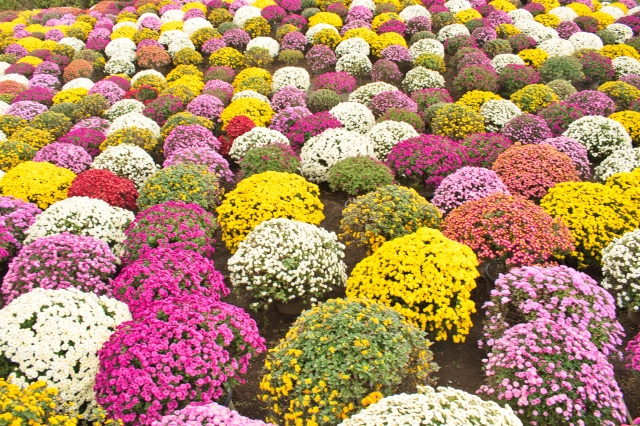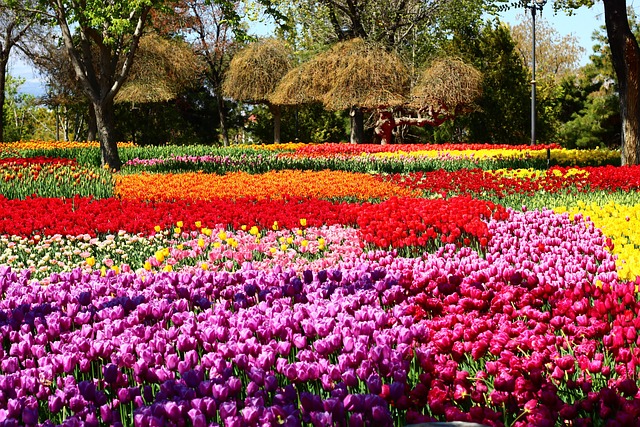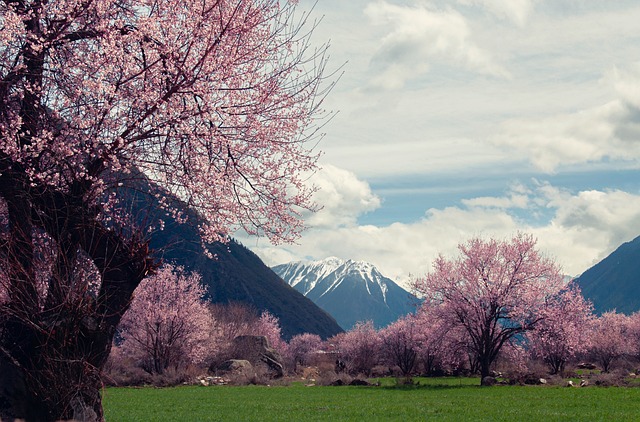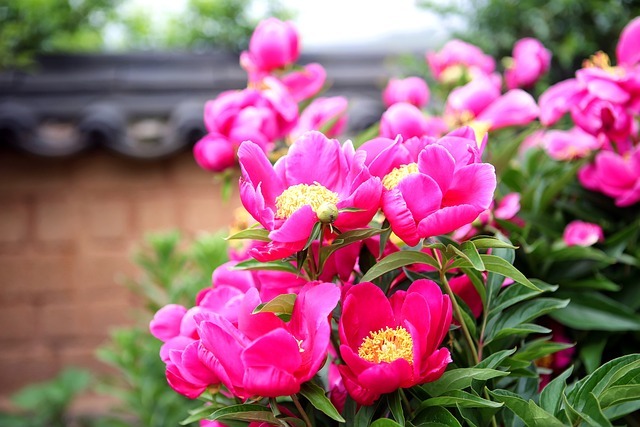Hyakkaryouran (百花繚乱) is one of Japan’s most elegant four-character expressions, literally meaning “hundred flowers blooming in profusion.” While it originally described the spectacular sight of countless flowers blooming simultaneously, this beautiful yojijukugo (four-character idiom) has evolved to represent diversity, talent, and vibrant creativity in various fields. This article explores the rich meanings, cultural significance, and practical applications of this captivating Japanese expression that celebrates the beauty of multiplicity and individual brilliance.
What is Hyakkaryouran?

Pronunciation and Character Breakdown
Hyakkaryouran is pronounced “hyah-kah-ryoh-rahn” (百花繚乱) and consists of four kanji characters:
- 百 (hyaku): “hundred” or “many”
- 花 (ka): “flower” or “blossom”
- 繚 (ryou): “to entwine” or “to wrap around”
- 乱 (ran): “to bloom profusely” or “in abundance”
Together, these characters create a vivid image of countless flowers blooming simultaneously, each contributing to a magnificent display of natural beauty.
Core Meanings and Interpretations
Hyakkaryouran carries multiple layers of meaning in Japanese culture:
Literal Meaning: A spectacular natural scene where numerous varieties of flowers bloom at once, creating a breathtaking tapestry of colors and forms.
Metaphorical Meaning: A situation where many talented individuals or diverse elements shine simultaneously, each contributing their unique qualities to create something magnificent. This could describe:
- A period of cultural or artistic renaissance
- A competitive field where multiple talents excel
- Any scenario celebrating diversity and individual excellence
Philosophical Meaning: The concept embraces the Japanese appreciation for diversity within harmony – the idea that multiple distinct elements can coexist and enhance each other’s beauty.
How to Use Hyakkaryouran
Contemporary Usage Examples
In Arts and Culture:
- “The local music festival showcased hyakkaryouran performances from artists worldwide.”
- “This year’s film industry displays a hyakkaryouran of directorial styles and storytelling approaches.”
In Business and Technology:
- “The startup ecosystem in this city presents a hyakkaryouran of innovative solutions.”
- “Our company’s diverse team creates a hyakkaryouran of perspectives and expertise.”
In Academic and Competitive Contexts:
- “The international conference featured a hyakkaryouran of research methodologies.”
- “Young athletes demonstrated hyakkaryouran talent at the championship.”
Appropriate Contexts for Usage
| Context | Appropriate Usage | Example Situation |
|---|---|---|
| Positive Achievement | When multiple people/things excel simultaneously | Art exhibition with diverse outstanding works |
| Cultural Events | Describing rich, varied programs | International festival with multiple performances |
| Professional Settings | Highlighting team diversity and talent | Workplace celebrating different skills and backgrounds |
Grammar and Sentence Structure
Hyakkaryouran typically appears in sentences using patterns like:
- “______ presents/displays a hyakkaryouran of ______”
- “The ______ shows hyakkaryouran characteristics”
- “A hyakkaryouran situation has emerged in ______”
Similar Japanese Expressions

Comparative Analysis
| Expression | Reading | Literal Meaning | Usage Context | Key Difference |
|---|---|---|---|---|
| 百花繚乱 | Hyakkaryouran | Hundred flowers in profusion | Celebrating diversity and excellence | Emphasizes positive multiplicity |
| 百花斉放 | Hyakkaseihō | Hundred flowers blooming together | Political/ideological contexts | Focuses on freedom of expression |
| 千紫万紅 | Senshimankou | Thousand purples, ten thousand reds | Describing colorful scenery | Emphasizes visual diversity |
| 百家争鳴 | Hyakkasōmei | Hundred schools of thought contending | Academic/intellectual discussions | Highlights competitive debate |
Understanding the Distinctions
Hyakkaryouran vs. Western “Renaissance”: While Renaissance implies a rebirth or revival, hyakkaryouran celebrates ongoing diversity and simultaneous excellence without necessarily referring to historical revival.
Hyakkaryouran vs. “Diversity”: Unlike the Western concept of diversity which often focuses on inclusion, hyakkaryouran emphasizes the beautiful results when different elements flourish together.
Cultural Background and History
Ancient Chinese Origins
Hyakkaryouran traces its roots to ancient Chinese literature, particularly the concept of “百家争鳴” (Hundred Schools of Thought) from the Spring and Autumn period (770-476 BCE). This era celebrated intellectual diversity where different philosophical schools coexisted and debated freely.
The floral imagery evolved from Chinese poetry that used blooming flowers as metaphors for human talent and cultural flourishing. Chinese poets often described periods of artistic or intellectual prosperity using garden and flower metaphors.
Japanese Cultural Adaptation
When this concept entered Japanese culture, it underwent significant transformation:
Integration with Japanese Aesthetics: The expression aligned perfectly with Japanese concepts like “wa” (harmony) and “omotenashi” (hospitality), emphasizing how individual excellence can contribute to collective beauty.
Connection to Seasonal Appreciation: Japan’s deep cultural connection to seasonal flower viewing (hanami) gave hyakkaryouran additional resonance, linking it to the country’s celebrated cherry blossom culture and other seasonal blooming patterns.
Influence of Japanese Arts: Traditional Japanese arts like ikebana (flower arrangement) and garden design embody hyakkaryouran principles, where different elements create unified beauty while maintaining individual characteristics.
Philosophical Implications
Hyakkaryouran reflects important Japanese values:
- Collective Harmony: Individual excellence contributing to group success
- Appreciation of Diversity: Recognizing that different talents enhance overall quality
- Temporal Beauty: Understanding that peak moments of excellence are precious and temporary
Modern Applications and Global Relevance

Contemporary Japanese Usage
Corporate Culture: Many Japanese companies use hyakkaryouran to describe ideal workplace environments where diverse talents collaborate effectively. This reflects modern Japan’s growing appreciation for international perspectives and varied skill sets.
Educational Settings: Schools and universities employ this concept when discussing multicultural education and the benefits of diverse learning environments.
Tourism and Cultural Exchange: Japan’s tourism industry uses hyakkaryouran to describe the rich variety of experiences available to international visitors, from traditional culture to modern innovations.
International Applications
Creative Industries: Global art communities have embraced hyakkaryouran as a way to describe vibrant creative ecosystems where multiple artistic voices thrive simultaneously.
Technology and Innovation: International tech hubs use this concept to describe environments where diverse approaches to problem-solving coexist and cross-pollinate.
Multicultural Societies: The expression provides a positive framework for discussing cultural diversity that emphasizes mutual enhancement rather than merely coexistence.
Seasonal and Cultural Connections
Hyakkaryouran maintains strong connections to Japan’s seasonal awareness:
Spring Associations: Most commonly linked to spring when multiple flower varieties bloom simultaneously, particularly during the overlap of plum, cherry, and other spring blossoms.
Garden Culture: Japanese gardens often embody hyakkaryouran principles, carefully planned to show sequential and simultaneous blooming throughout different seasons.
Festival Traditions: Many Japanese festivals celebrate hyakkaryouran moments when multiple cultural elements – music, dance, food, art – create unified celebrations.
summary
Hyakkaryouran represents more than just a beautiful description of blooming flowers – it embodies a sophisticated understanding of how diversity and individual excellence can create collective beauty. This four-character expression captures essential Japanese values while offering universal insights about celebrating differences and recognizing that peak moments of cultural, artistic, or intellectual flowering are both precious and temporary.
In our increasingly connected global society, hyakkaryouran provides a valuable framework for appreciating multicultural collaboration and the beautiful results that emerge when diverse talents, perspectives, and approaches flourish together. Whether describing a vibrant arts scene, a dynamic business environment, or a rich cultural exchange, this elegant Japanese expression reminds us that true beauty often lies not in uniformity, but in the harmonious celebration of multiplicity.
Understanding and using hyakkaryouran connects us to centuries of Japanese wisdom about finding beauty in diversity, making it a valuable addition to any appreciation of Japanese culture and philosophy.


